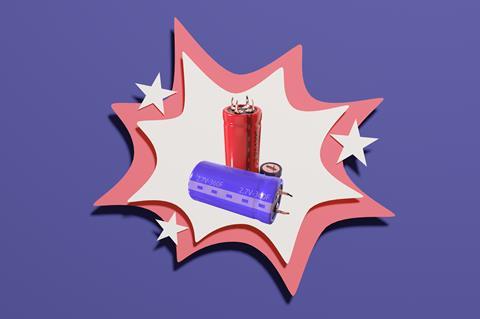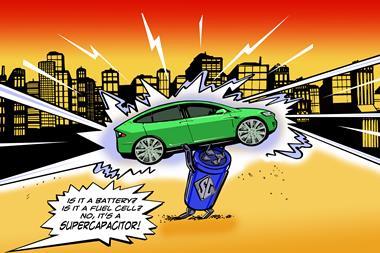Offering complementary properties to batteries, their time might be round the corner
How many batteries do you own? The count in my own house includes phones, tablets, laptops, cameras and seemingly hundreds of kid’s toys and gadgets. That’s a lot of different lithium-based storage devices.

Batteries – in particular lithium-ion ones – are an almost inescapable facet of modern life. I even travel with a portable power pack to charge the other ones. They power our devices and will help smooth the transition to more renewable, but intermittent, sources of energy –besides the devices listed above, there are many more kilowatt-hours of battery storage in my garage, hooked up to the solar panels on the roof.
But how many capacitors do you own? In my case, the answer could be zero, but I simply don’t know. The countless circuits in those battery-powered devices listed above almost certainly contain quite a few, but I’ve never knowingly bought one on its own, or as the key component of something else.
Could that be about to change? Supercapacitors offer a glimpse of an energy storage future different from – or complementary to – batteries. Unlike batteries, capacitors store charge on two closely spaced surfaces, and thus do not rely on redox chemistry. That means they can be charged and discharged extremely quickly, and they don’t suffer the deterioration from structural chemical changes during those charging cycles that cause batteries to lose storage. Those are attractive benefits, as anyone with a smartphone more than two or three years old will appreciate.
There are of course downsides, which is why supercapacitors have not taken over the world and earned a Nobel prize. The main one is their energy density, or rather a lack of it. For any given size, supercapacitors currently hold far less energy than an equivalent battery.
As James Mitchell Crow’s feature details, however, plenty of research is underway to rectify that. Many decades of research on battery-related or porous materials means there are plenty of groups out there with the skillsets to find the new compounds needed. Hopefully, in a few years’ time, we’ll all be as au fait with our capacitors as we are with our batteries today.

















No comments yet